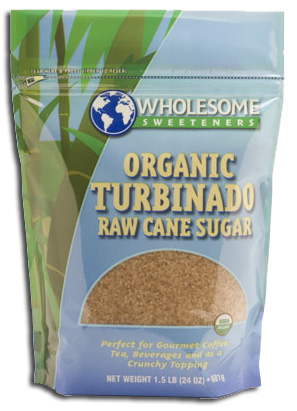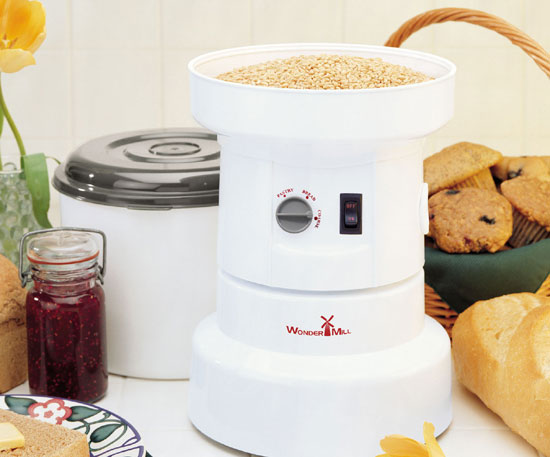|
|
||||||||||
|
|
The Nagasawa family diet update: May, 2010
As we continue this journey of trying to eat more healthy, with the hopes of sharing our thoughts with our neighbors and friends, we are encouraged by how a few changes can have lots of benefits. Here's a list of top changes we've made to our diet, in a rough order of importance.
These two points alone have completely changed how we eat breakfast. No more packaged breakfast food. Now, one of my favorite things to cook is fresh whole wheat blueberry pancakes. If you buy whole wheat flour from the store, it can be a little grainy when you cook it. But if you mix an equal portion of plain yogurt with the flour in a bowl, and leave overnight, it will start to ferment the wheat. The wheat will become softer and lighter; and the yogurt will release even more nutrients from the wheat for your body to absorb. In the morning, just mix in a little bit of baking soda, 1 – 2 eggs depending on the amount of flour. We use 100% maple syrup or blue agave syrup. Whole wheat pancakes are a lot more filling than the light, empty pancakes made from white flour.
3. Use brown rice, not white rice. Brown rice has more nutrition. Like white flour, white rice is the starch leftover after the nutritious bran and germ layers are stripped off. Unfortunately, in most Asian cultures, brown rice is associated with poverty and wartime shortages, although we should have known better from history: In the past, it was eaten by the sick, the elderly, and as a cure for constipation (it has more fiber). Some say that if Asians ate brown rice instead of white rice, Asians would have been taller than Europeans because brown rice is better than wheat as a staple grain. It's currently more expensive than common white rice, partly due to its relatively low supply and difficulty of storage and transport. But, if more people eat it, we'll produce more and the cost will go down, right? Brown rice has natural vitamins B1, B3, and iron (the FDA requires rice suppliers to "enrich" white rice with those nutrients). Brown rice also has 84 mg of magnesium per serving, which is awesome (magnesium is quite important), while white rice has only 19 mg.
6. Buy nitrate-free packaged meats. Nitrates are preservatives in bacon, sandwich meats, hot dogs, sausages, etc. But they are toxins that make your organs carry less oxygen, which can lead to a condition called methemoglobinemia. You can find "nitrate free" meats in most stores nowadays. If you eat nitrate-free bacon, you can save the fat and use it for frying something next time - surprisingly, it's also healthier than vegetable oil.
8. Eat organic vegetables and organic fruit in season. Heavy leafy greens like cabbage, collard greens, and kale (get organic to avoid pesticides) are nice because they absorb flavors and have more iron. Arugula in salad is quite tasty. Broccoli, cauliflower, and asparagus are probably the best vegetables you can eat, although asparagus makes your pee smell! Raw carrots, celery, and tomatoes with garlic hummus are good. We've also discovered some recipes with beets, leeks, and sweet potatoes. Again, mixing some of these veggies in with good broths, or beans, has been tasty. Pictured (top left) is an improvised Mexican tostada I learned in East Palo Alto, CA: a tortilla (wheat, fried in organic canola oil) with beans (not canned refried, but from dried beans that are boiled then mashed) with raw cabbage, onion, and cilantro, boiled and shredded chicken, and hot sauce. Also (bottom left and right) are blueberry pies with whole wheat flour crust and blueberries from a nearby farm (July), and raspberry jam made from raspberries picked from our garden (June-July), and homemade ice cream.
10. Use a water filter. Tap water lets too much flouride pass into the water. And with filtered water, we're able to make a fermented tea called kombucha which detoxifies the body and helps your liver, though you can also drink a little bit of apple cider vinegar in water to get a similar benefit.
11. Stop using plastic plates, cups, and tupperware because of plastic leakage in the dishwasher. You can wash plastic stuff by hand in milder water - it's just that the super hot water in dishwashers strips plastic particles off to be ingested next time. Plastic intake is suspected in developmental disorders like ADD, ADHD, autism, etc. It is likely to be a big issue in the future because of all the plastic garbage floating in the Pacific (a garbage patch twice the size of Texas) and now in the north Atlantic. As that plastic travels up the food chain through fish to us, we're going to be in trouble.
12. (added August 11, 2010) We also drink raw milk from a farm that does not use hormones with cows. You'll definitely want to read up on the raw milk vs. pasteurized milk debate on your own. But one big concern is the growth hormones that have been given to cows that seems to be causing early onset of puberty in girls (read an article about that). If you're interested in raw milk, you'll need to find a provider within your state, because federal laws restrict the movement of raw milk across state lines.
Some things we'll be trying next are: Eating more fermented vegetables like Korean kimchi and Japanese napa because the enzyme content helps with digestion. Stay tuned...
Some decent ideas for eating healthy and saving money: How to Save $3,000 a Year on Food Without Even Noticing.
|
|||||||||


 1. Use raw sugar, organic sugar,
or honey instead of white processed sugar and artificial
sweeteners. We don't usually drink soda, sweetened milks,
or most juices anyway, but did eat a decent portion of desserts
(ice cream, brownies, cookies).
1. Use raw sugar, organic sugar,
or honey instead of white processed sugar and artificial
sweeteners. We don't usually drink soda, sweetened milks,
or most juices anyway, but did eat a decent portion of desserts
(ice cream, brownies, cookies).
 2. Use whole wheat flour instead
of white processed flour.
2. Use whole wheat flour instead
of white processed flour.
 4. Use
coconut oil, palm oil, organic canola oil, and
cold-pressed olive oil for frying, not vegetable oil. Vegetable oil is
chemically altered and our bodies absorb more of it. After
eating no vegetable oil for a month, Ming and I went to a
Chinese restaurant and shared in a nine course banquet. It
was probably the vegetable oil and MSG in the food that gave
Ming a bad stomachache that night and throughout the next day.
One nice dish is homemade "french fries" - really, sliced
potatoes (sweet potatoes, too) baked with canola oil or olive
oil; we've had a couple of dinners
with that and homemade salsa (tomatoes, avocado, cilantro,
garlic, salt, and hot sauce) that the kids love. We've not
bought McDonalds' french fries for years, but now we have a
really good alternative to that.
4. Use
coconut oil, palm oil, organic canola oil, and
cold-pressed olive oil for frying, not vegetable oil. Vegetable oil is
chemically altered and our bodies absorb more of it. After
eating no vegetable oil for a month, Ming and I went to a
Chinese restaurant and shared in a nine course banquet. It
was probably the vegetable oil and MSG in the food that gave
Ming a bad stomachache that night and throughout the next day.
One nice dish is homemade "french fries" - really, sliced
potatoes (sweet potatoes, too) baked with canola oil or olive
oil; we've had a couple of dinners
with that and homemade salsa (tomatoes, avocado, cilantro,
garlic, salt, and hot sauce) that the kids love. We've not
bought McDonalds' french fries for years, but now we have a
really good alternative to that. 5. Make broth from bones
(preferably grass fed cows, free range chicken, and fish).
Dr. Sally Fallon, author of the healthy cookbook Nourishing
Traditions, recommends that people make broth once a week to
get the benefits of the marrow. It's important for our own
bones and joints. Especially for runners, who probably
don't get enough calcium, etc. to heal bones and joints from
pounding the pavement. Seasoning the broth with sea salt
and/or rosemary and/or thyme gives the broth a nice flavor that
can be made into most kinds of soup. The fat that rises to
the top after refrigeration can be saved for frying - it's
healthier than vegetable oil.
5. Make broth from bones
(preferably grass fed cows, free range chicken, and fish).
Dr. Sally Fallon, author of the healthy cookbook Nourishing
Traditions, recommends that people make broth once a week to
get the benefits of the marrow. It's important for our own
bones and joints. Especially for runners, who probably
don't get enough calcium, etc. to heal bones and joints from
pounding the pavement. Seasoning the broth with sea salt
and/or rosemary and/or thyme gives the broth a nice flavor that
can be made into most kinds of soup. The fat that rises to
the top after refrigeration can be saved for frying - it's
healthier than vegetable oil.